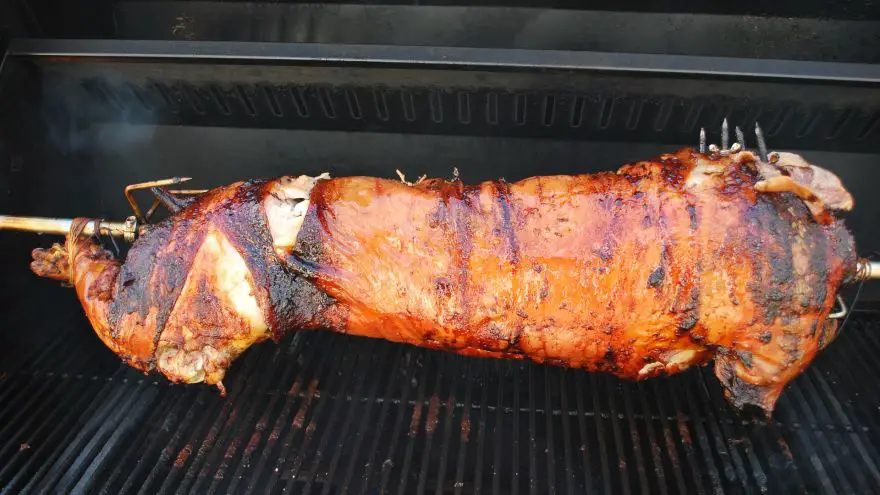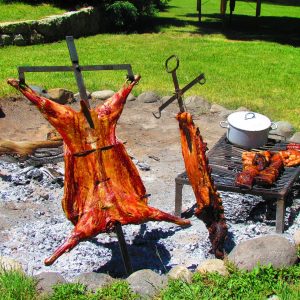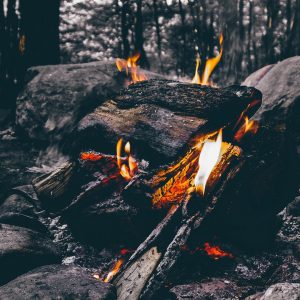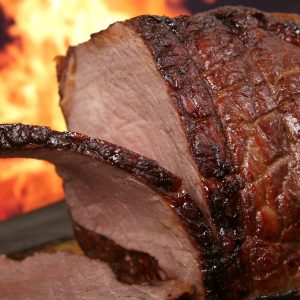Outdoor Cooking – Spit Roasting
 Outdoor Cooking – Spit Roasting
gearweare.net
Outdoor Cooking – Spit Roasting
gearweare.net
Nothing drives the mind and taste buds wild quite like seeing food cooking over an open fire on a spit. A style best known from Polynesia and the Deep South, spit roasting takes advantage of your campfire’s flames and slowly rotates your meal to perfection. After a long day of hiking, enjoying beautiful natural vistas and working up an appetite putting a nice piece of meat or vegetables on a spike and slowly letting it roast over a warm fire while turning it to ensure maximum flavour will be sure to relax you and prepare you for a meal worth every mouthwatering moment you have to wait. Take the following considerations and safety tips to heart and give this method a go the next time you are looking to have a memorable meal on you extended hiking trek.

Table of Contents
History of use
Spit Roasting is a cooking method stretching back countless generations. It is a method that has reached every corner of the globe and whether it’s a traditional pig roast in Polynesia, roasted glazed duck in China or the famous mouthwatering barbecue so heavily intertwined with American cuisine from the Deep South you are sure to find any number of regional variations to field test. Different forms of spit-roasting can be found in most cultures and a quick search will fill your desire for a plethora of recipes to try out next time you are in the backcountry.
How to set it up
The easiest way to set up a spit roast when you’re in the backcountry is to come prepared with a metal roasting set. These are easily found at any outdoor equipment outfitter and can range from the simple to the premium models that have all the bells and whistles you never knew you needed. For those of you wanting to limit your pack’s weight to as little as possible then the following is meant for you. These steps are meant to be a simple guide to setting up your own makeshift spit roast with nothing but a few branches collected from the forest.
Step 1 – Find two branches that have sturdy Y’s at the top and dig them into a hole on either side of your fire pit. Dig them at least 20cm deep to make sure they are stable.
Step 2 – Light your fire and let it build into a roaring fire.
Step 3 – Place your seasoned foods, meat or otherwise, on a long pole that reaches from one Y-shaped pole to the other.
Step 4 – Cook the meal evenly by rotating the pole on a regular basis. This will give you an even distribution of grilling and ensure that the food is completely cooked.

Safety and Considerations
Like always fire safety is key to being successful in the backcountry. Choose a site in an open spot with no overhanging tree limbs and limit any foliage or leaf litter to at least a few meters away from the flames. A sheltered spot from wind keeps embers at bay as well.
When setting up the spit ensure the supports are stable and will hold the weight of your food. If you have a shaky foundation then your whole meal can be spoiled by having the food collapse into the fire. And, I think we can all agree that no one wants to have a meal covered in ashes.

Types of meals that do best with this method
For the most part, this cooking method has been utilized to create enchanting meat dishes. Roast beef, glazed duck, suckling pig and countless other tasty creations all enjoy the benefits of cooking over an open fire. Vegetables can be cooked this way too, however. Root vegetables, corn, and skewers of various configurations can be adapted to a spit roast just as easily as any piece of meat. The vegetables, however, will need the addition of a bit of oil when cooking because they don’t have the natural fats to keep them juicy like meat options do.
For some inspiration to get you going with this style check out these links to some tantalizing recipes.
Spit-roasted Pork
https://www.ricardocuisine.com/en/recipes/5713-spit-roasted-pork
Rotisserie Chicken
https://www.thespruce.com/how-to-make-rotisserie-chicken-334120
Spit-roasted Suckling Pig with Vegetables
https://www.bigoven.com/recipe/spit-roasted-suckling-pig-with-vegetables/65760

Mistakes to be made
Aside from the safety considerations, since working with fire is its own risk, there are a few simple things to keep in mind so that you can avoid making a mistake when cooking your meal. A barbecue master will be able to provide you with a long list of problems that may arise when attempting spit roasting for the first time but for the beginners, I have put together a couple to get you started.
Tip 1 – Make sure the spit maintains a constant rotation to avoid burning on one side and undercooking on the other.
Tip 2 – If you are cooking with meat pay close attention to the quality of the heat. If it isn’t particularly hot you will need to increase cooking time and if it is too hot you run the risk of having a thick charcoal coating all over your food.
Tip 3 – The proximity of the food relative to the flame is important for the same reasons as the previous tip. If the food is too close to the fire and comes into direct contact with the flame then you will have heavy charring, which doesn’t taste good. If it is too far away then the food won’t cook properly. Keep it within a few centimeters for ideal cooking.











